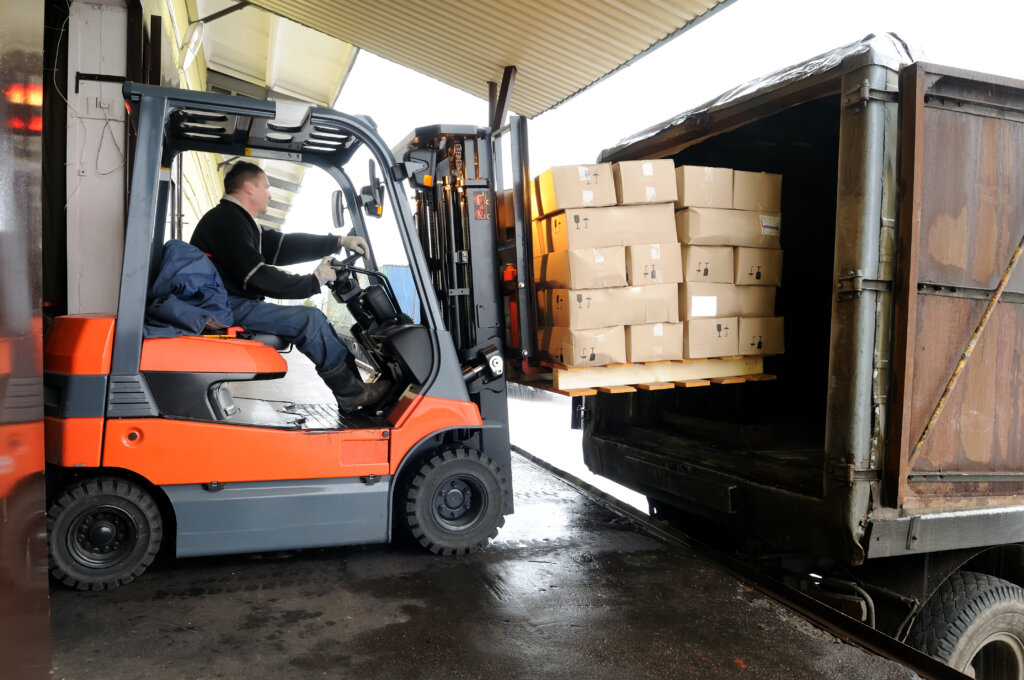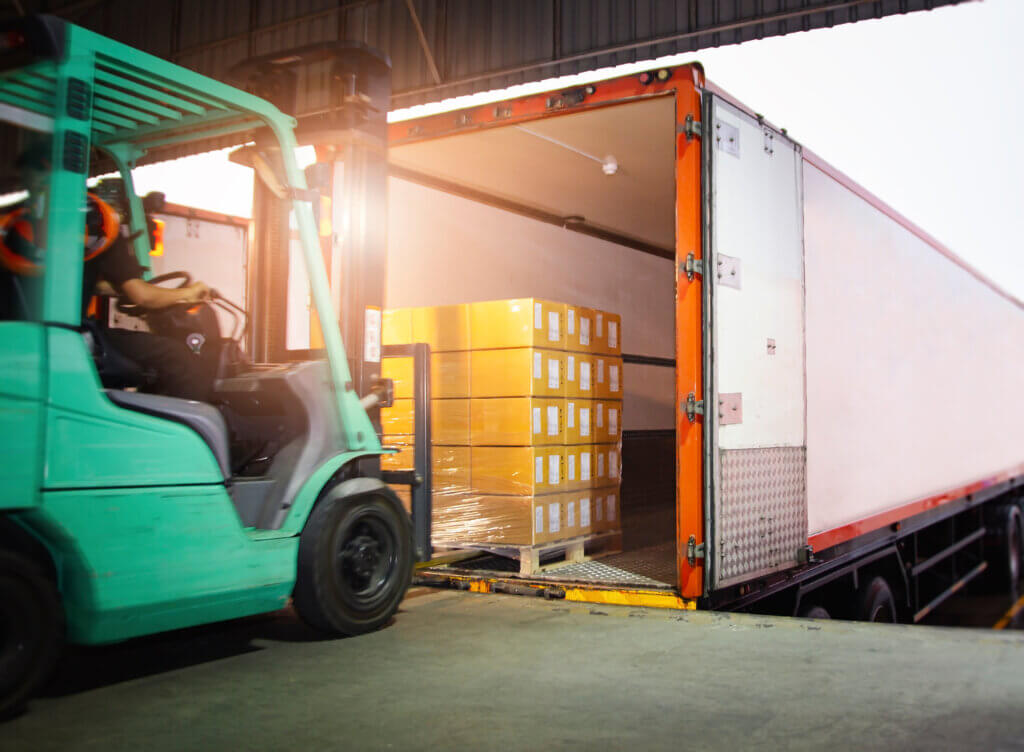The typical complex nature of freight shipping makes it such that businesses constantly seek ways to transport their goods more quickly, efficiently, and cost-effectively, from intermodal shipping to cross-docking. Yet, these businesses may rely on more innovative shipping solutions in difficult periods to achieve their transportation goals. This is where adaptable transportation service, such as transloading, comes in to provide a much-needed solution to these challenges.
But what is transloading in logistics? Transloading has become an increasingly common way to ship goods in recent years due to growing international trade fostered by online commerce. Hence, our comprehensive guide highlights everything there is to know about transloading in logistics.
What Is Transloading

Transloading is a process in the logistics industry where freight is transferred from one mode of transportation to another during its journey to the final destination. This process is typically used for long-distance shipments requiring cooperation between several shipping companies or multiple modes of transportation. With this approach, businesses can send their goods to their intended location flexibly and cost-effectively.
Ïnitially, the idea of saving cost and time by transferring freight in transit from one mode of transportation to another may seem unusual. However, shippers only explore this process when it’s deemed the best possible option, considering the current transportation circumstances. Across the logistics industry, trucks are the only transportation mode capable of unloading goods to any destination without hassle. As such, it’s only practical for trucks to load freight from trains, planes, or boats and complete the remaining part of the journey.
Trucks are not always the final part of transloading; however, this is nearly always the case. This is because trucks can access almost any place without relying on a second mode of transportation. Some prevalent transloading services include the following;
- Rail-to-truck exchange
- Rail-to-rail exchange
- Truck-to-truck exchange
- Large ships to watercraft
- Large ships to trucks
These are just a few services, but the list can incorporate several other services based on the delivery requirements. In today’s supply chain, the world is enticed by timeliness and quick delivery, which makes transloading a vital shipping process. It also expands to incorporate every aspect of logistics, including third-party and fourth-party logistics companies.
How Does Transloading Work
Intermodal shipping is the standard transport process because it can be moved and transferred easily from one transportation mode to another. The standardization of intermodal shipping has also helped to increase the prevalence and efficiency of transloading.
That said, it’s also worth noting that transloading is typical for freight with multiple warehouse locations requiring cargo to be palletized. In this case, carriers move goods from the original mode of transportation to a temporary storage facility. They are then reloaded onto another mode of transportation to complete the remaining part of the journey.
The ultimate purpose of transloading is to optimize shipments, either by combining several transportation modes to deliver cargo faster or using a transportation mode that best suits the specific needs of the shipment. Logistics providers are responsible for the transloading process, as they help to transfer goods between different modes of transportation and ensure that the cargo remains on schedule and meets all transportation requirements.
Benefits Of Transloading In The Logistics Industry

Transloading is a valuable asset for businesses in the shipment of goods, providing several benefits that help to enhance their logistics goals. While it seems unconventional, shippers can incorporate this approach effectively into any logistics plan to help ensure their freights reach their destination when due. Some of the benefits of transloading to the supply chain include the following;
● Improving Flexibility
One of the first benefits of transloading is how much it improves flexibility. In an industry as rigid and unpredictable as the supply chain, the ability to adapt to external disruptions gives businesses a considerable advantage over competitors. Through transloading, companies can explore more options during shipping and the ability to adjust if one mode of transportation is insufficient.
The outcome for transloading can be further improved when paired up with other transportation strategies, such as cross-docking. Businesses can explore even more options when navigating the complex shipping process. The supply chain has become much more complicated, especially considering factors such as the COVID pandemic. Hence, businesses need to explore several strategies that help to simplify the process as best as possible.
● Fosters Business Growth
As we said earlier, transloading is typical for freight with multiple warehouse locations; hence, it is pretty standard for businesses to use this strategy as a makeshift distribution center. With transloading, companies can explore more easily reachable destinations, increasing shipment capacity and choices. Thus, these businesses can decide to upscale whenever they feel right.
For instance, engaging trucks for long-haul shipments can be very challenging. However, employing other means of transportation for most of the trip and having a truck pick up the cargo at a transloading facility would allow your business to increase the size of its shipment. Companies will also be better prepared to meet rising demands for products.
● Freight Consolidation
Transloading enables freight consolidation by allowing goods from multiple shipments to be merged into a single load. Freight consolidation typically occurs when goods are transferred from their original mode of transportation to a temporary storage facility, where they are then palletized and combined with other goods bound for the same destination. Freight consolidation provides a more cost-effective solution for most businesses.
By consolidating several cargoes into a single shipment, transloading reduces the number of individual loads that need to be transported, resulting in reduced transportation costs and better use of resources. Furthermore, consolidation also fosters improved delivery time and a more flexible approach to shipping that can be tailored to each freight’s specific requirements.
● Speeds Up Shipments
The goal of transloading is to improve how efficiently the logistics industry works in transporting freight. In this case, quicker delivery time is a significant performance indicator for efficiency. Transloading speeds up shipments by allowing goods in transit to be transferred from one transportation mode to another, optimizing the shipping process and reducing transit time. With transloading, logistics companies can identify and address bottlenecks and limitations associated with freight transportation.
Additionally, businesses can explore an improved delivery time through transloading by reducing the number of shipment that needs to be transported and consolidating several shipments. Transloading is a very flexible and adaptable approach, allowing for faster and more effective delivery of goods, improved supply chain performance, and reduced transit time.
● Cost Effectiveness
Businesses that engage in transloading services typically have to pay a transload fee. However, it remains a more cost-effective option when compared to other possible options. In truth, one of the most significant benefits of transloading is how cost-effective it is for businesses.
Take the United States, for instance; rail lines are much cheaper than trucks, which is why they are most used, especially over long-distance hauls. Hence, businesses save more by having the bulk of a shipment transported by trains and then transloaded to a truck and delivered to its final destination. Several transloading services are available, and businesses can consider which one suits their shipping needs and offers a more cost-effective solution.
Conclusion
All in all, transloading is a precious process in the logistics and supply chain industry, allowing for the efficient transfer of freight from one transportation mode to another. Transloading features several key elements, from terminal selection to cargo handling and regulatory compliance, all of which helps to mitigate risks, ensure a smooth transloading process, optimize the supply chain, and reduce costs.
Ultimately, if all procedures are carried out adequately, transloading becomes a flexible and cost-effective solution for businesses looking to streamline their shipping and logistics operations.
